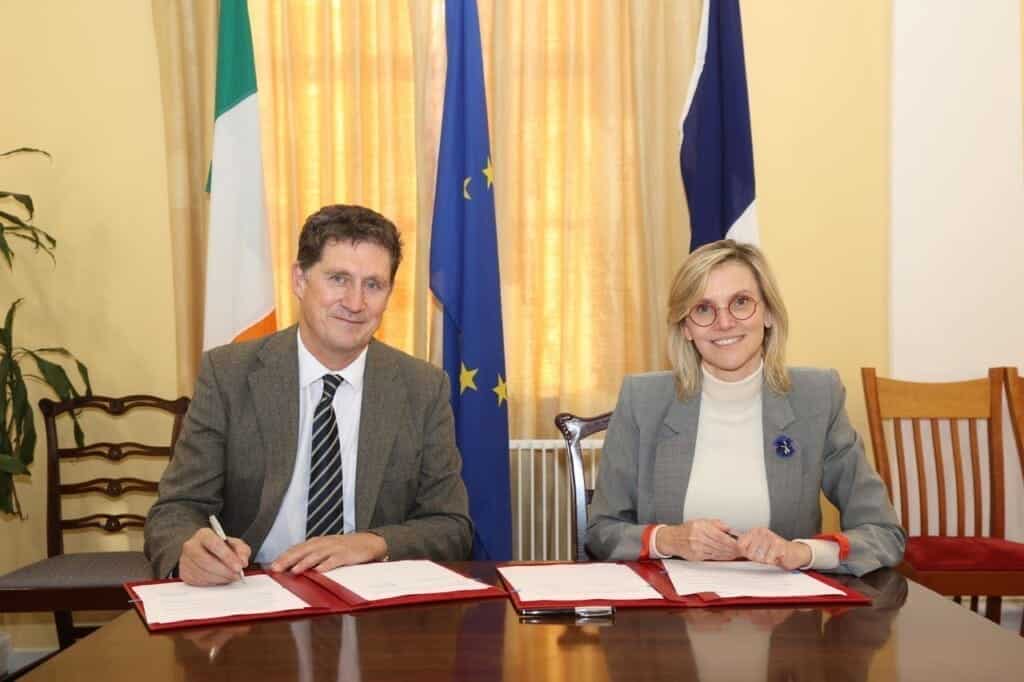A thrilling Energy project unites Ireland and France

A revolutionary energy project that will boost the transition to a more sustainable energy future and deepen links between France and Ireland has officially started construction. Ireland will have a direct electrical connection to the European Union thanks to the high-voltage subsea power line known as the Celtic Interconnector, which will connect the electrical grids of these two countries. The project, which is expected to be finished in 2026, is a joint venture between Reseau de Transport d’Electricite in France and EirGrid in Ireland. It has a significant capacity to power 450,000 houses.
(You might like our blog on Ireland’s Birr Castle – With its rich and proven scientific legacy.)
On November 13, the construction officially began. Agnes Pannier-Runacher, the French Minister of Energy, and Eamon Ryan, the Irish Minister for the Environment, Climate, and Communications, attended. Their partnership highlights the importance of this endeavour in terms of energy integration as well as serving as a symbol of closer relations between Ireland and its closest EU neighbour.

Significance of the Celtic Interconnector energy project
There is potential for the Celtic Interconnector project to yield substantial advantages for both countries. The 700-megawatt underwater cable will link the northwest coast of France and the southern coast of Ireland once it is finished. By 2027, this strategic link should be operational, helping both nations achieve their larger objectives of reducing carbon emissions and embracing renewable energy.
The project’s enthusiasm was echoed by Minister Ryan, who said, “The Celtic Interconnector project’s construction commencement marks an important part of our wider energy ambitions.” He emphasised how Ireland’s expanding usage of renewable energy is made possible by improved electrical connectivity, highlighting both the country’s progress toward a net-zero power system and its role in lowering energy prices.
Minister Pannier-Runacher, his counterpart from France, mirrored the same feelings, expressing her joy and pride in being the first to officially open the Celtic Interconnector. She emphasised how the project will help decarbonize France’s and Ireland’s power mixes while improving the security of their energy supplies. Beyond the energy industry, the two countries work together on collaborative projects including COP28 and the February 2024 International Energy Agency ministerial.
The Offshore Network Development Plan, a comprehensive strategy aiming at building an integrated energy system for European energy markets, further emphasizes the significance of the Celtic Interconnector project. In order to help the project’s design and implementation, the European Commission is actively supporting the initiative by contributing €530.7 million from the Connecting Europe Facility (CEF).
In November 2022, the contracts were signed in Paris by the delegates, enabling the formal start of construction. The fact that the building milestone fell on the same day as French Prime Minister Elisabeth Borne’s visit to Ireland highlights the two countries’ working spirit even more.
Ireland and France signed a Joint Declaration of Intent to reaffirm their commitment to working together on the energy transition during the visit. In line with the larger European goal of becoming the first continent to be climate-neutral by 2050, this declaration represents the willingness of both nations to hasten the decarbonization of their energy systems.
As work on the Celtic Interconnector moves forward, it serves as evidence of the effectiveness of global cooperation in tackling common issues, especially those related to sustainable energy. The energy project represents a shared commitment to a greener, more linked future in addition to bridging the physical distance between Ireland and France.






